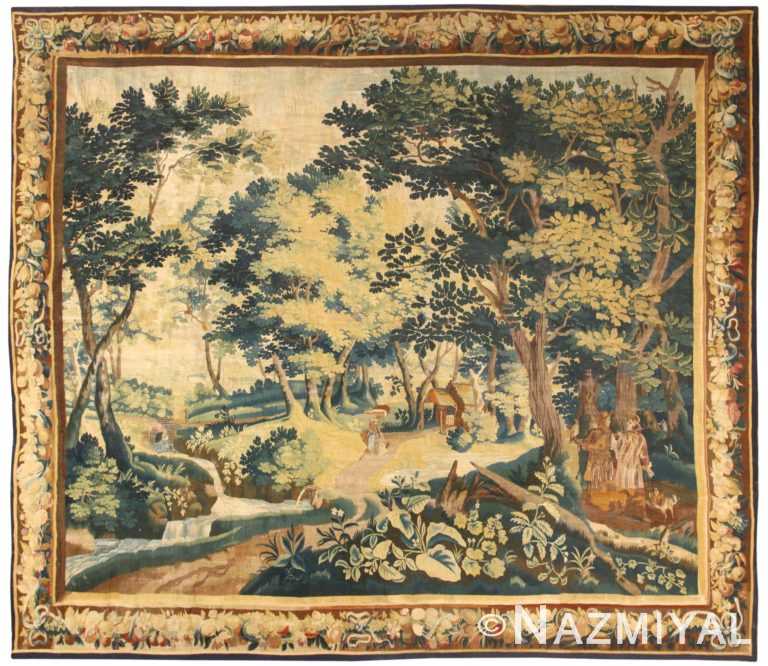17th Century Antique Flemish Tapestry 50157
Breathtaking 17th Century Antique Flemish Tapestry, Country of Origin: Belgium, Circa Date: 17th Century – This exceptionally rare 17th-century Belgium / Flemish tapestry features a pastoral scene in fine detail. During the late Renaissance, the antique Flemish tapestries of this quality were only available to wealthy merchants and nobility. This one is in exceptionally fine condition for its age. Even though its exact origins are unknown, it shows the exceptional workmanship and artistic characteristics found in those of the Master weavers of Antwerp.
Even though these pieces were large, they were made to be hung on the walls of large estates and public buildings to show off the owner’s wealth and status. Many times, these tapestries depict ancient Greek, Roman, and Biblical tales, but this one is in the style of Flemish Verdure tapestries of the time. These tapestries highlighted the natural world and often have an abundance of plant life, water elements, and pastoral scenes. A “Verdure” tapestry, which focuses on foliage and the recreation of natural landscapes. They are meant to evoke a connection to the natural world and a sense of calm.
One of the most recognizable characteristics of these tapestries is the use of perspective and color to give the impression of distance. The foreground, midground, and distant elements are distinctive, which is a hallmark of the masters of the time. The beauty and wide range of greens give these tapestries a natural, organic feel and pay tribute to the simple, country life around Flanders.
The weavers of Belgium were in fierce competition with the well-established Gobelin tapestries of France. Belgian tapestries were established almost a century before the revival of the Gobelin tapestry works and were influential in the style. These tapestries show many of the hallmarks of Baroque and Rococo paintings of the time. You will often see reflections of architectural details in them, too. For instance, the fruit border of this piece can often be found in the plaster reliefs of castles and buildings of the time.
This is an exceptional antique piece for the serious collector as well and the sophisticated consumer. As time passes, these pieces become more difficult to find on the open market. Owning one is a privilege for the collector of art and antiquities. This 17th century piece deserves a place where it can be honored and admired by many.















